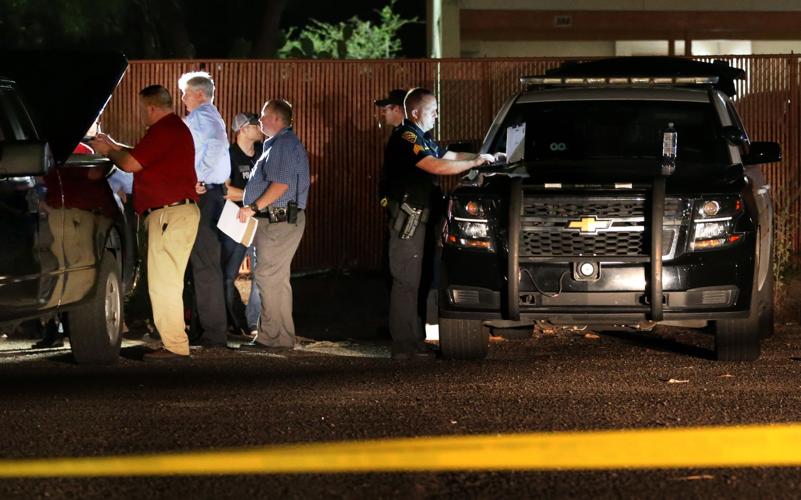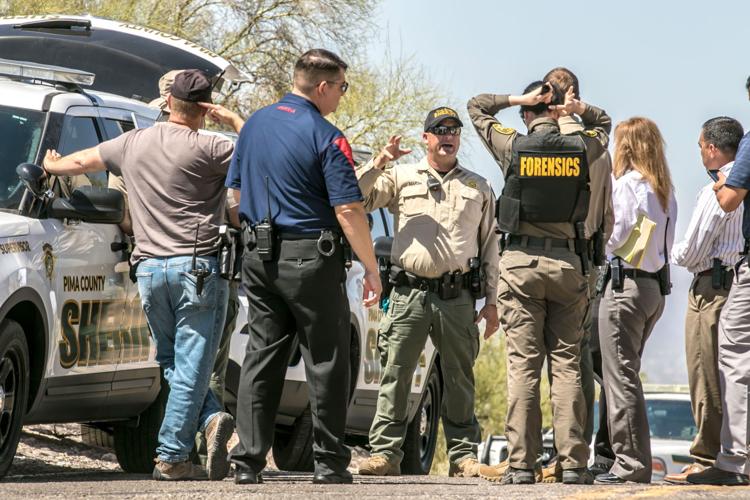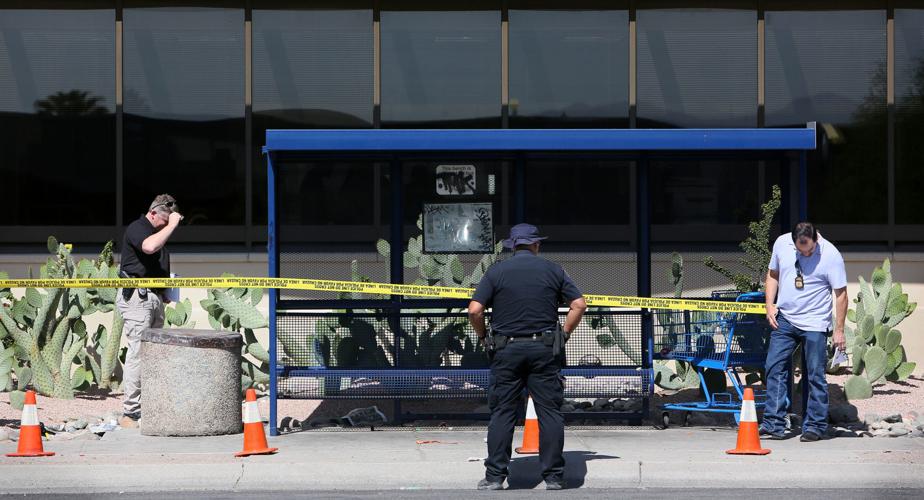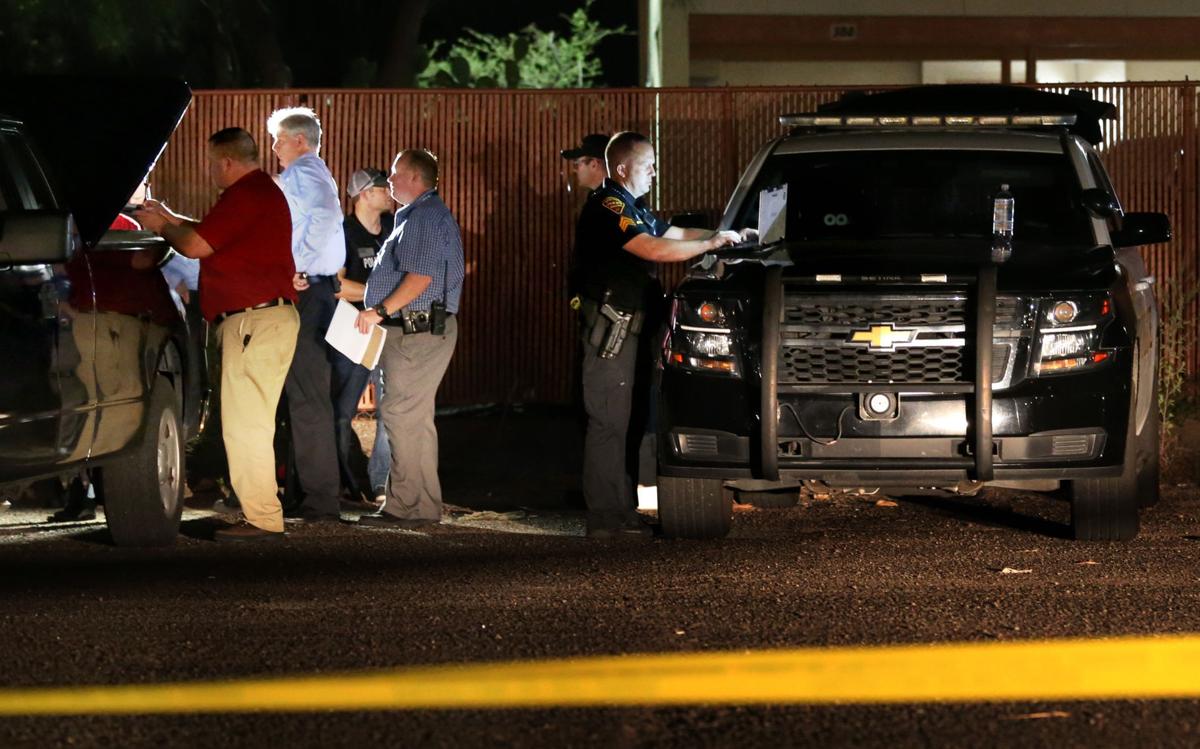In April, 66-year-old Timothy Abriola was hit in the head and repeatedly stabbed with a machete as he was leaving his job at a Tucson AutoZone.
Two men are accused of shoving the gravely injured Abriola into the back seat of his own car before driving away, dumping his body in the desert and unsuccessfully trying to rob a convenience store.
Eric Reino and Isaiah Franko were arrested shortly after and are facing first-degree murder charges in Pima County Superior Court.
The slaying of Abriola is just one of 55 homicide cases that the Pima County Medical Examiner’s Office has received from area law enforcement agencies as of Aug. 17.
After a two-year uptick in homicides in Pima County, 2018 is poised to be even deadlier, but experts are unsure exactly what is behind the increase in violent deaths.
Homicide detectives with the Tucson Police Department have also been busy this year, investigating 40 cases through Aug. 15 — just shy of the 45 cases investigated in all of 2017.
While the number of homicide cases is up in 2018, so is TPD’s solve rate, which stands at 82.5 percent, well above the law enforcement average.
But with the increased solve rate comes a grim statistic: TPD’s homicide caseload this year is 54 percent higher than it was at the same time last year.
The increase in violent crime is not unique to Tucson. Cities across the country have seen a similar trend that started in 2015. And while experts can agree that violent crime is on the rise, they can’t seem to agree on an explanation.

Pima County Sheriff’s Department investigators worked a murder scene in the Catalina Foothills on April 19. The department has seen its homicide caseload fall over the past year.
HOMICIDE TRENDS
In 2010, homicides peaked in Pima County, with the medical examiner receiving 93 cases. That number fluctuated slightly over the next several years, until it dropped to 56 in 2015, bucking the national trend.
But in 2016, homicides began to rise in Pima County again, with 65 cases coming before the medical examiner. That number jumped nearly 30 percent in 2017, to 84 cases, and this year is on track to exceed that total.
While TPD’s homicide caseload has drastically increased this year, that of the Pima County Sheriff’s Department has decreased quite a bit. To date, the Sheriff’s Department has investigated six homicides. For all of 2017, PCSD investigated 19 homicides and left only two unsolved. In 2016, the department also investigated 19 cases, up from 10 in 2015.
Homicide victims in Pima County are overwhelmingly male; in 2017, 65 were male and 19 were female.
Of the TPD homicide cases in 2018, nearly 20 percent have been related to domestic violence, compared with less than 10 percent for all of 2017. Another 20 percent have involved robberies and roughly 20 percent have involved fights.
Tucson police are hopeful that the number of domestic-violence cases will drop after adding a second domestic-violence squad earlier this year and implementing a new screening tool to better predict when victims are in danger of being killed or maimed, according to Assistant Chief Carla Johnson.
The lethality checklist includes questions about the abuser’s jealously level, whether they’ve used a weapon to make threats, and whether they’ve ever tried to choke, strangle or suffocate their victim.
“We’re paying more attention to the lower-level (domestic-violence crimes,) which are the gateway to more serious instances of domestic violence,” Johnson said.
Year over year, the murder weapons used are typically guns. In 2017, 67 percent of the homicide cases involved guns, with the next most common weapon being sharp objects.
“This may be one of the areas we do struggle, due to the prevalence of guns,” said Tucson Police Chief Chris Magnus.
FIGHTING VIOLENT CRIME
Some of the techniques TPD is using to fight violent crime include an emphasis on de-escalation training and scenario-based training.
While the models are generally effective, there are limits, and a peaceful resolution isn’t always possible when guns are involved, Magnus said.
“When it’s someone who’s barricaded in a house with a gun, I think it’s pretty evident that we put a lot of effort and time and resources into trying to reach a peaceful conclusion with individuals like that,” Magnus said. “But when someone comes out with two guns and pivots around as if to shoot, I don’t know how you get around that.”
And with gun-related homicides being so prevalent, TPD relies on its partnership with the federal Bureau of Alcohol, Tobacco and Firearms. Through the partnership, TPD has access to ATF’s software and network to analyze and store ballistic evidence.
“The fact that we have the ability to do this kind of analysis and so many people invested in it, is really a credit to this relationship between ATF and TPD,” Magnus said. “I know at a time when federal law enforcement is looked at maybe not with the same glow as it was in the past, ATF is really one of our best partners for dealing with violent crime.”
For the past two weekends, TPD has also been engaging in gang-related weekend deployments, using federal funds to cover overtime. The deployments have resulted in some arrests and have led to contacts with community members who share information about activity in the area.
Magnus also credits its Mental Health Support Team with reducing violent crime, although he calls the reduction anecdotal, saying you can never really know how many lives are saved.
Sixty to 70 percent of the calls coming into 911 involve mental health or an emotional crisis, Magnus said.
“There seems to be no disagreement, we have a lot of people in mental-health crisis here. I think we would be seeing a lot more violence, including homicides, if we didn’t have the MHST team,” Magnus said.
The department has also experienced great success with 88-CRIME, an anonymous tipster hotline that offers a reward for information leading to a conviction. Tips have become more frequent and better over the years, and at least half of the callers don’t attempt to claim the money.

Tucson police detectives searched for evidence at a homicide scene outside the Bank of America at South Mission Road and West Ajo Way on April 25.
WHAT’S BEHIND
THE INCREASE?
Nationally, experts can’t reach a consensus about what’s causing the increase in violent crimes. Locally, it’s no different.
“I don’t think there is any one clear-cut indicator,” Magnus said. “There are some factors that play a greater role in an ongoing basis in homicides. The ready availability of drugs is a persistent problem. Drugs are still a very common component to a lot of these, so that continues to be a challenge.”
TPD officials are also grappling to understand the increased number of fights involving guns that lead to serious injury or death.
“I’m not sure any of us really have an answer to what’s going on there,” Magnus said. “I think we see a lot of people who are angry about something going on with their life, who have really poor coping mechanisms to deal with it and who have easy access to weapons.”
There are a fair number of people who are “living on the edge,” Magnus said, and it doesn’t take much to set them off, whether it be a family member or a trivial incident.
“I don’t want to give the impression that it’s just the down-and-out that are having these engagements with one another,” Magnus said. “We see people of various income levels and in different neighborhoods who just kind of snap for some reason.”
Magnus referenced the February case of Hernando Enriquez, who’s accused of killing his wife and daughter and attempting to kill his teenage son.
“What causes somebody to snap in that way? It’s really hard to tell,” Magnus said.
While scholars are in agreement that the homicide spike is indeed real, there’s no clear answer to what’s causing it.
“There are very likely local causes, but no national phenomenon as we saw in the 1980s,” said Al Blumstein, a professor at Carnegie Mellon University’s Heinz College. “While there are some speculations, there’s no uniform or proven explanation. We’re seeing different indications in different cities.”
Given the rise of more powerful guns capable of holding larger magazines, examining different approaches to limiting firepower could be an option to deal with the spike.
“This is a cause for concern, but not panic,” said Thomas Abt, a senior research fellow at Harvard. “Americans are outliers when it comes to murder. We’re killed at a rate seven times higher than any other civilized nation.”







